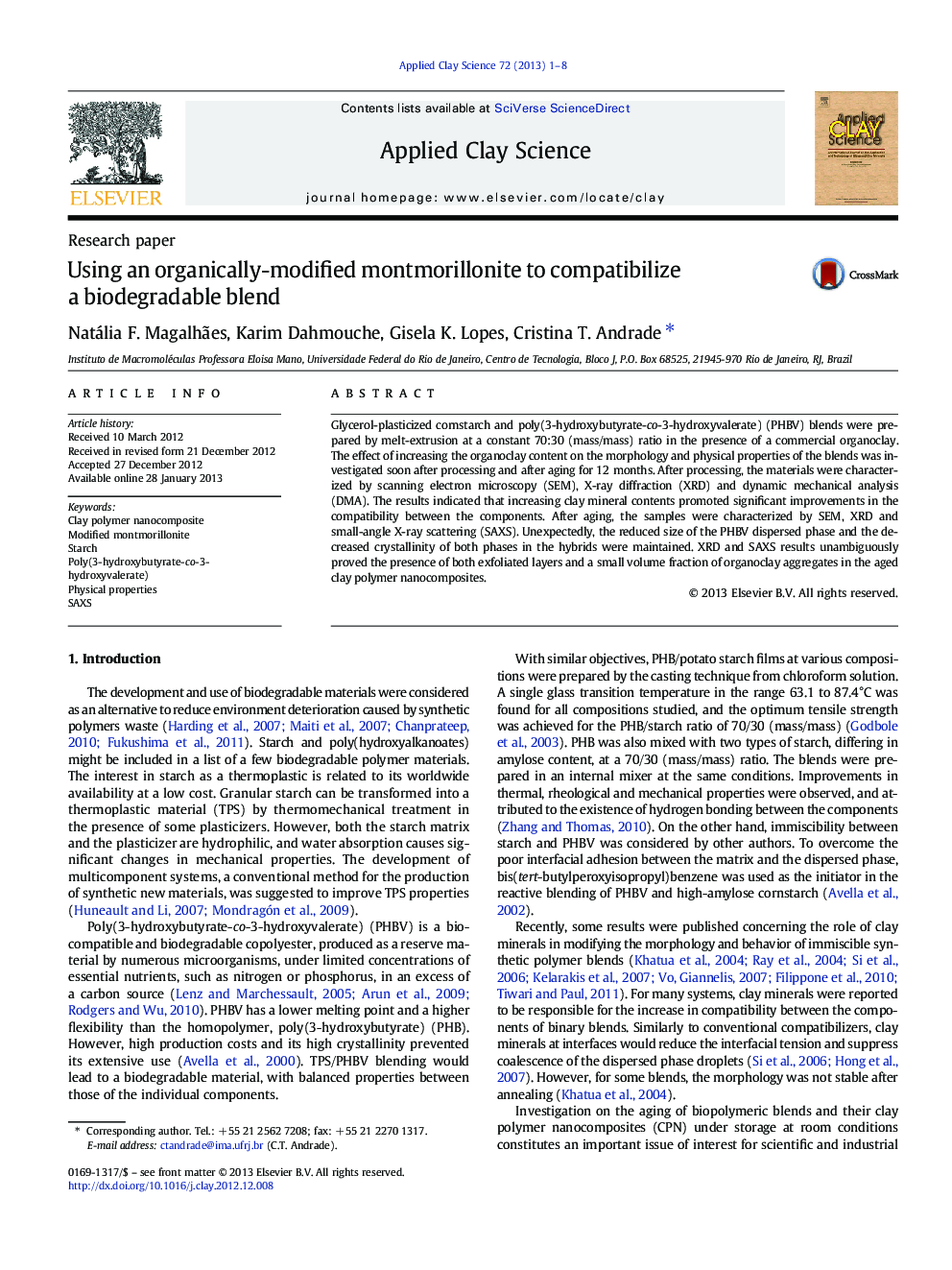| Article ID | Journal | Published Year | Pages | File Type |
|---|---|---|---|---|
| 1695093 | Applied Clay Science | 2013 | 8 Pages |
Glycerol-plasticized cornstarch and poly(3-hydroxybutyrate-co-3-hydroxyvalerate) (PHBV) blends were prepared by melt-extrusion at a constant 70:30 (mass/mass) ratio in the presence of a commercial organoclay. The effect of increasing the organoclay content on the morphology and physical properties of the blends was investigated soon after processing and after aging for 12 months. After processing, the materials were characterized by scanning electron microscopy (SEM), X-ray diffraction (XRD) and dynamic mechanical analysis (DMA). The results indicated that increasing clay mineral contents promoted significant improvements in the compatibility between the components. After aging, the samples were characterized by SEM, XRD and small-angle X-ray scattering (SAXS). Unexpectedly, the reduced size of the PHBV dispersed phase and the decreased crystallinity of both phases in the hybrids were maintained. XRD and SAXS results unambiguously proved the presence of both exfoliated layers and a small volume fraction of organoclay aggregates in the aged clay polymer nanocomposites.
